Punks gather at Kings Road in London in the 70s Fot ...
Continuing the Punk.London event, which marks the 40th anniversary of punk movement throughout the year 2016 in London, two exhibitions now open: From King's Road to King's Cross: The Story of Punk Clothing ( "The King's Road to King's Cross: a History of Punk Clothes "), from 31/05 to 11/06, and Punk at the Museum of London, from 01/06 to 31/07, artifacts shows (mainly clothing) punks in the London Museum.
The first is a partnership between the iconic London street King's Cross and the famous fashion college Central Saint Martins. The idea is to show how fashion punk, which was to cradle the King's Road - where he was born the first Vivienne shop Westwood and Malcolm McLaren, the FRI, meeting the punkadaria in the 70s - influenced all London coming to elegant King's Cross area.
museum piece
The show punk in London museum has a bunch of things, such as clothing, accessories, objects, records, fanzines and photos and of course a good paraphernalia related to the punk bands. The cost of this exposure - besides being a great opportunity to visit the tourist little Museum of London - is that the curators mix pieces that were collected from donations of memorabilia punk brought by the public since the beginning of the year. Ie has boutique punk and day-to-day lives of ordinary citizens of London, a city that still has visible influence of punk.
The report of BR Press talked with the curators of the show Punk Museum of London, Jen Kavanagh and Beatrice Behlen, who told in an exclusive interview available to the Brazilian media, as received and selected arc parts of the old, who are not exactly museum. Unmissable.
Museum of London - 150 London Wall, London EC2Y 5HN
-
Scenes of London: the photography of Dick Scott-Stewar
This article contains images of nudity.
Our new exhibition Stomping Grounds: Photographs by Dick Scott-Stewart displays photographs recently donated to the museum by the Dick Scott-Stewart Archive. Exhibition curator Anna Sparham shares her thoughts on the extraordinary variety of subcultures and scenes on display.
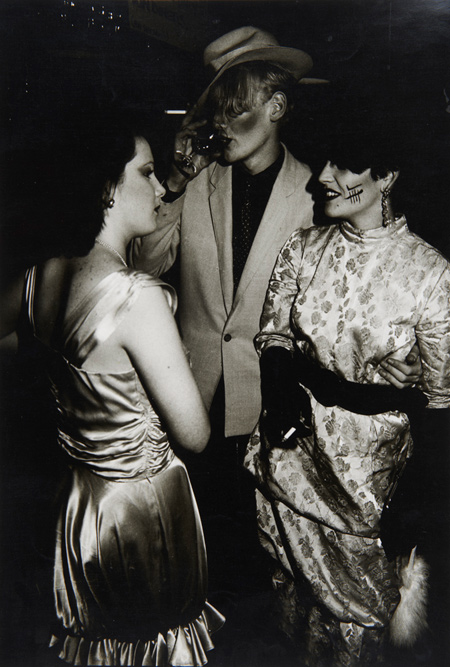
Trio in the Blitz club, 1981
© Dick Scott Stewart Archive/Museum of London; ID no. IN9715.1
I was born in 1979. I have fond memories of early childhood dancing to a jumble of tracks from the seventies and eighties, thanks to my parents’ eclectic tastes in music, their wonderful mixtapes recorded from the radio’s Top 40 charts and, of course, Top of the Pops.
So when I first encountered some of the photographs Dick Scott-Stewart made of the period, I naturally brought these recollections to them. We all connect with images via our own experiences. With these particular photographs, my own experiences are of course limited, given that I was still in pre-school. I can’t pretend to know what it was like to hang out on the King’s Road in a safety-pinned t-shirt and mohican, or to throw shapes on the dance floor of the Blitz club(a mild obsession, aged 4, with Boy George and Culture Club’s Karma Chameleon doesn’t count).
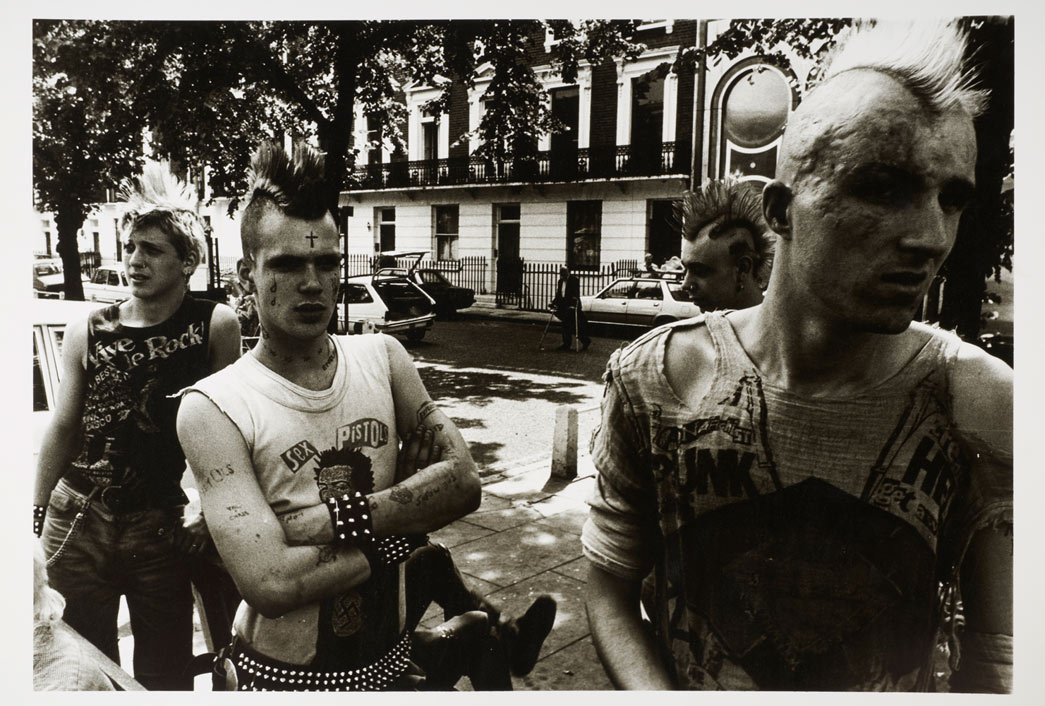
But I can begin to relate to these photographs when I recall my own adolescence. I do know what it felt like to escape into music; the thrill of discovering the new and old. I do know how it felt to experiment with a style of dress that moved against mainstream fashion. (Mistakes were made.) I know how it is trying hard to be part of a scene and how significant that feeling of belonging is in your formative years. This is what fascinated Dick Scott-Stewart when he turned his camera on youth subculture.
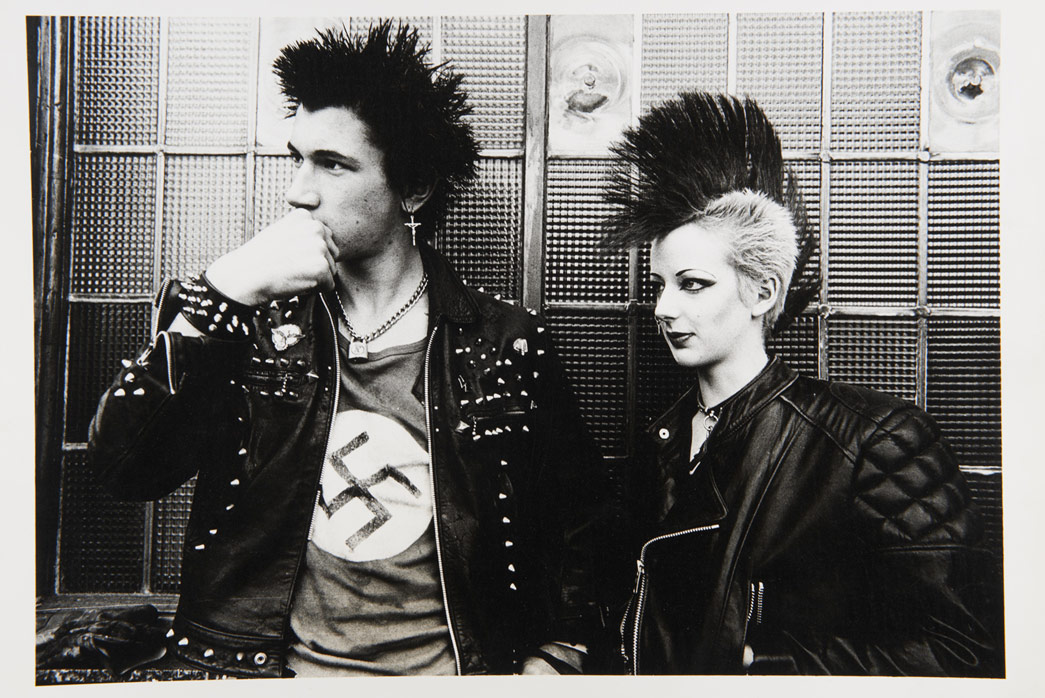
On a surface level, the choice of clothes, make-up, tattoos and hairstyles make for intriguing subjects to photograph. But beyond this, it is the social attitudes and behaviours on show which really captivated first Scott-Stewart, and in turn myself and all those who view his work.
Let's start with the Rockabilly photographs...
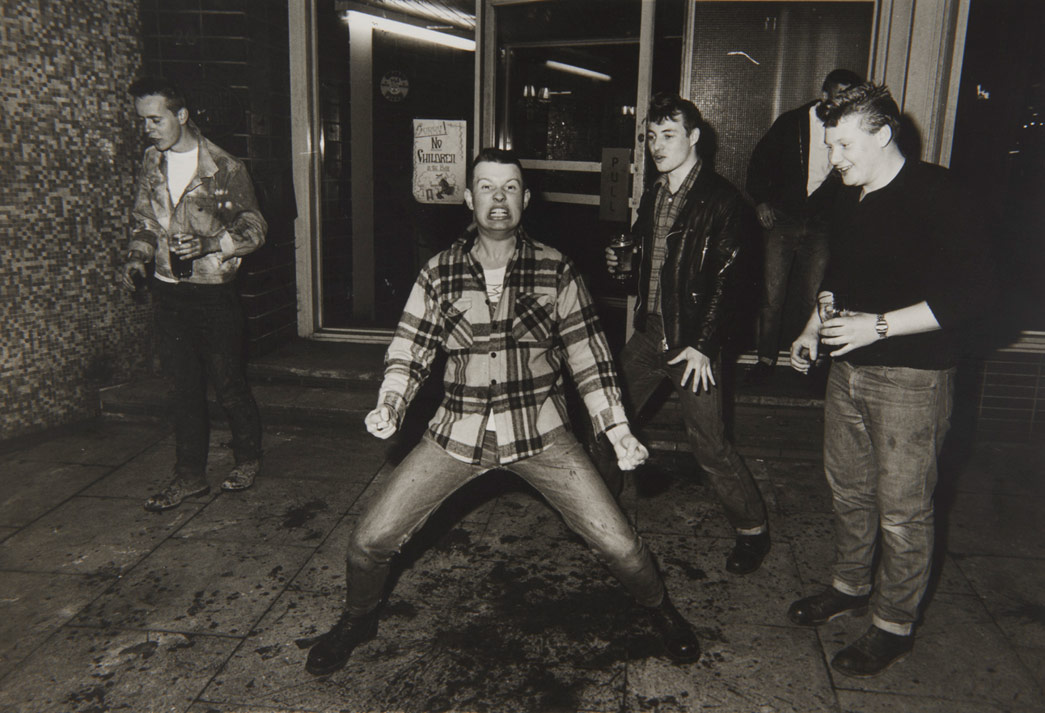
Their checked shirts, boots, jeans and hair all conform to the revival Rockabilly look at that time. Scott-Stewart had earlier met several Rockabillies in another pub at St. George’s Circus and had begun to get to know how they socialised and where they hung out.
"Attitude” is synonymous with youth subculture, expressed through appearance, body language and behaviour. Here the central figure is dramatically playing up to the camera. He appears to have dropped or possibly thrown down his pint on the floor, leaving an ambiguous stain on the paving stones below. Rendered in monochrome, this could almost be blood, adding to the energy of the scene, the undercurrent of violence. The laughing Rockabilly to the right softens the tone again, to present a scene which brilliantly conveys adolescent immaturity. In this instance the supposed threat of violence is all role-play, pumped up for the camera. This doesn’t take away from the realism of the shot. Had the boys been truly fighting this would have been an interesting documentary record. Capturing them effectively play-fighting is just as valid in reflecting the behaviour of the group.
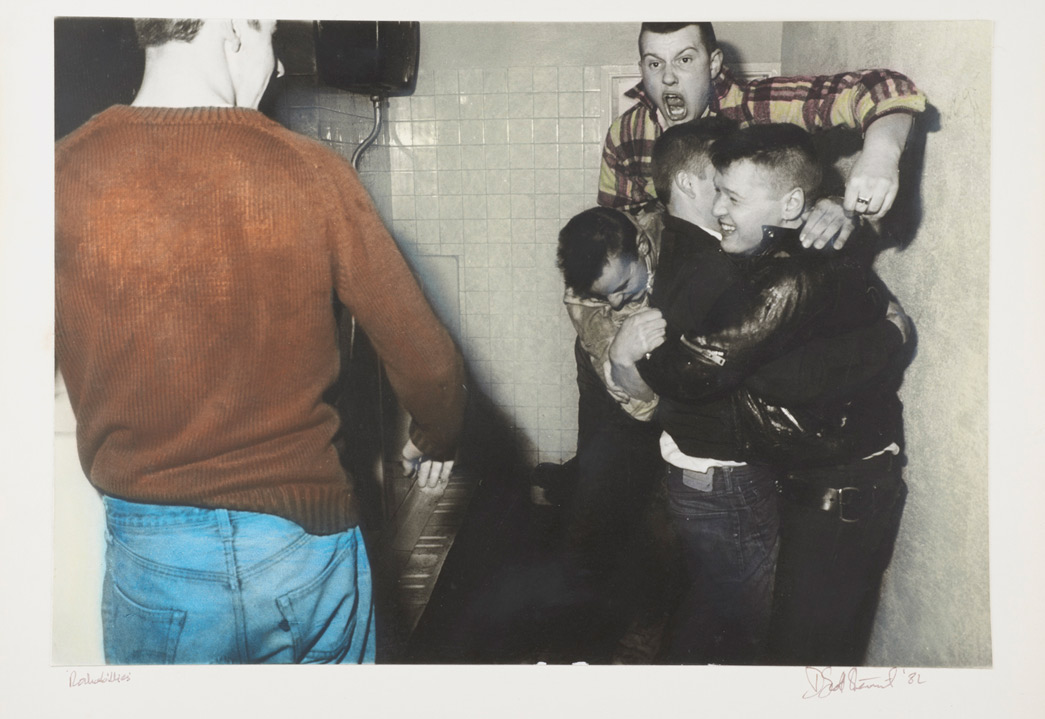
Scott-Stewart enjoyed interacting with people. In an interview for SLR Magazine, April 1983, speaking with the Creative Camera editor Peter Turner, Scott-Stewart said
I'm a 6ft 2 voyeur. I love looking at things. Photography is just an excuse to meet interesting people. It is a passport to situations that I like to be involved in.
For the time span of the photographs in this exhibition, he would have been in his early thirties. Sadly, Scott-Stewart died in 2002, aged only 54. Those who knew him are quick to comment on his humorous and self-effacing nature. This modesty is one reason why his work is not better known.
His photographs show that his subjects are often conscious of his presence. An engagement with people often really comes through, as does his empathy for the subjects. Scott-Stewart related most strongly to those he saw as facing certain struggles in life; who lived on the periphery. His images of youth subculture reflect how individuals congregate, survive in their groups and strive to move against the tide of the mainstream. Further photographs in this exhibition are united by this thread of marginality.
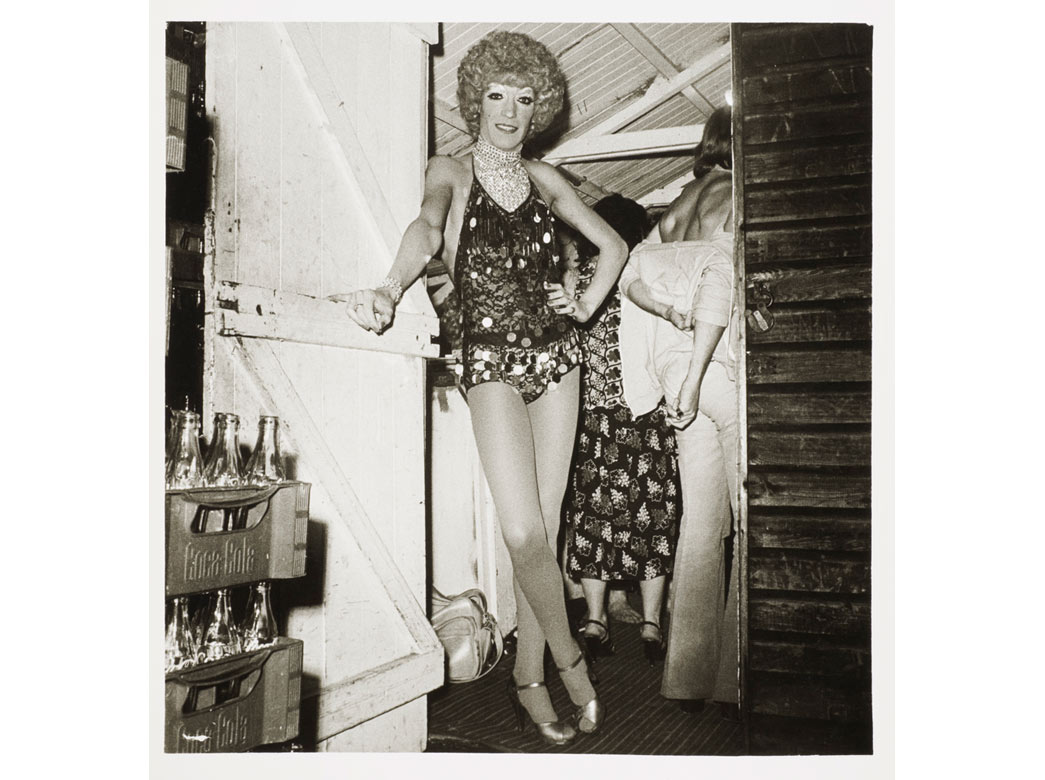
This cross-dresser isn’t presented in a sensationalised or over-dramatic manner. The relaxed pose and the backstage context implies ease with the photographer, reflecting Scott-Stewart’s personable and sociable nature.
Sometimes his photographs are more surreptitiously shot. His images of strippers document both the environment in which they are performing and the vulnerability of the situation. This is accentuated through Scott-Stewart’s play with voyeurism and multiple viewers – the photographer photographing a man, photographing a stripper, no doubt surrounded by an attentive crowd.
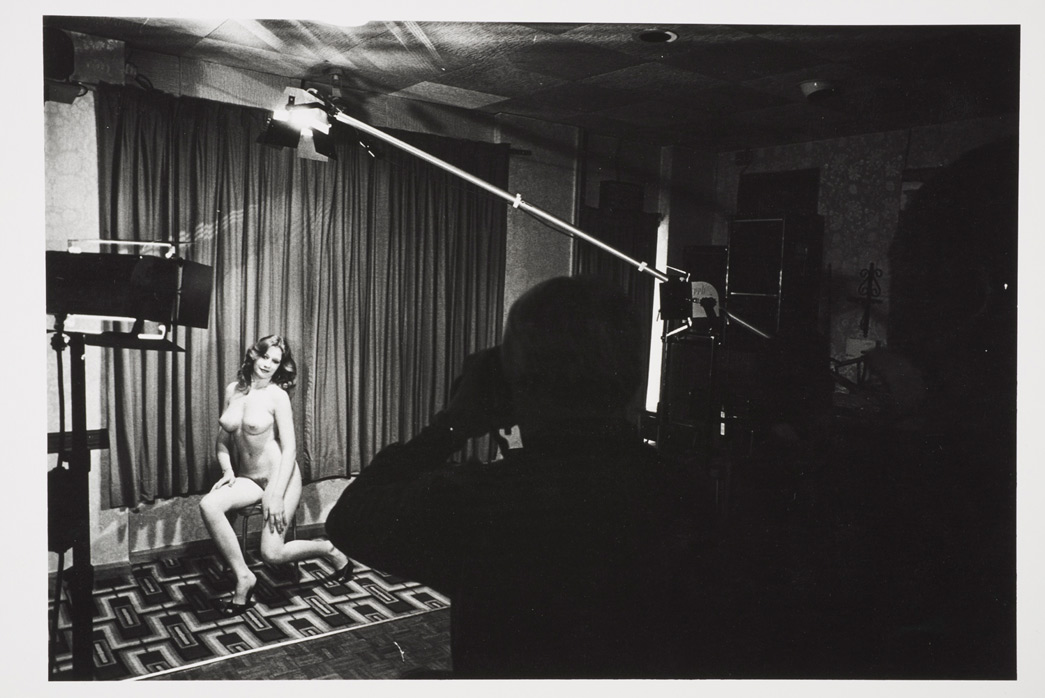
As a freelance documentary photographer, alongside his commissioned work, Scott-Stewart would independently seek out photo stories which had the potential to turn into features for magazines or newspapers. In 1974 he published a book ‘Fairground Snaps’ bringing together much work he had produced over a long term project. These images now reside at theNational Fairground Archive.
He had intended to create a book of his project on the wrestling at Battersea Town Hall. As part of the donation to the museum we acquired the handmade folio that Scott-Stewart assembled of these photographs. The exhibition showcases both the folio itself, and a number of the images within panned across a large projected screen. Like many people of his generation he had enjoyed watching the wrestling on Saturday afternoon television. The entertaining pantomime that the sport offered appealed to Scott-Stewart’s humour and photographer's eye. He and his friends would regularly go and enjoy the show at Battersea.
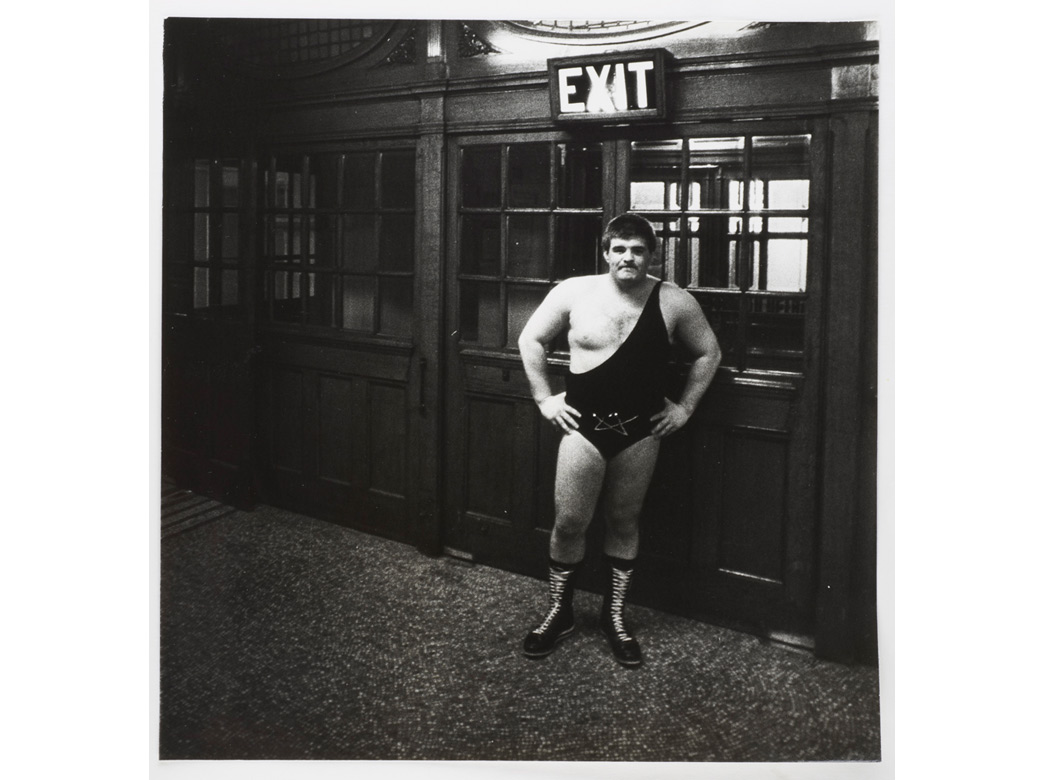
He photographed the wrestlers themselves in situ, allowing their theatrical costumes and poses to dominate the images. He then turned the camera to the ‘fans and groupies’ and the attentive and interactive audience. I love these photographs for their eccentricity, warmth and their power to transport you to the drama of the event. There is a definite sense of escapism here and, again, recognition of the strength of collective belonging.
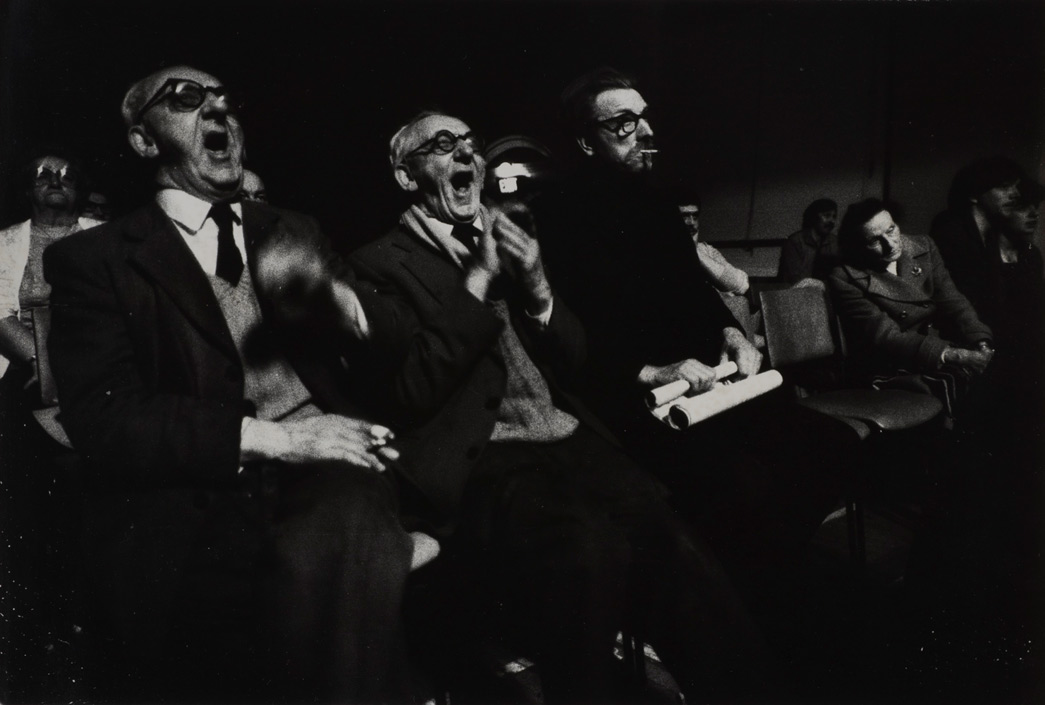
The collection donated by the Dick Scott-Stewart Archive to the museum – 117 photographs plus the wrestling folio – extends beyond the subjects shown in the exhibition. In selecting for the show, I wanted to display some of Scott-Stewart’s strongest work together with that which best represented his enthusiasm, approach and interests. Another common theme of the collection overall is the notion of performance. From the New Romantics to the Rockabillies, from the strippers to the jive dancers, all were performing either to the camera or to those around them. ‘Performance’ appears to go hand in hand with the other reasons these subjects intrigued Scott-Stewart. The groups of photographs shown in the exhibition complement each other by being given a wider context.
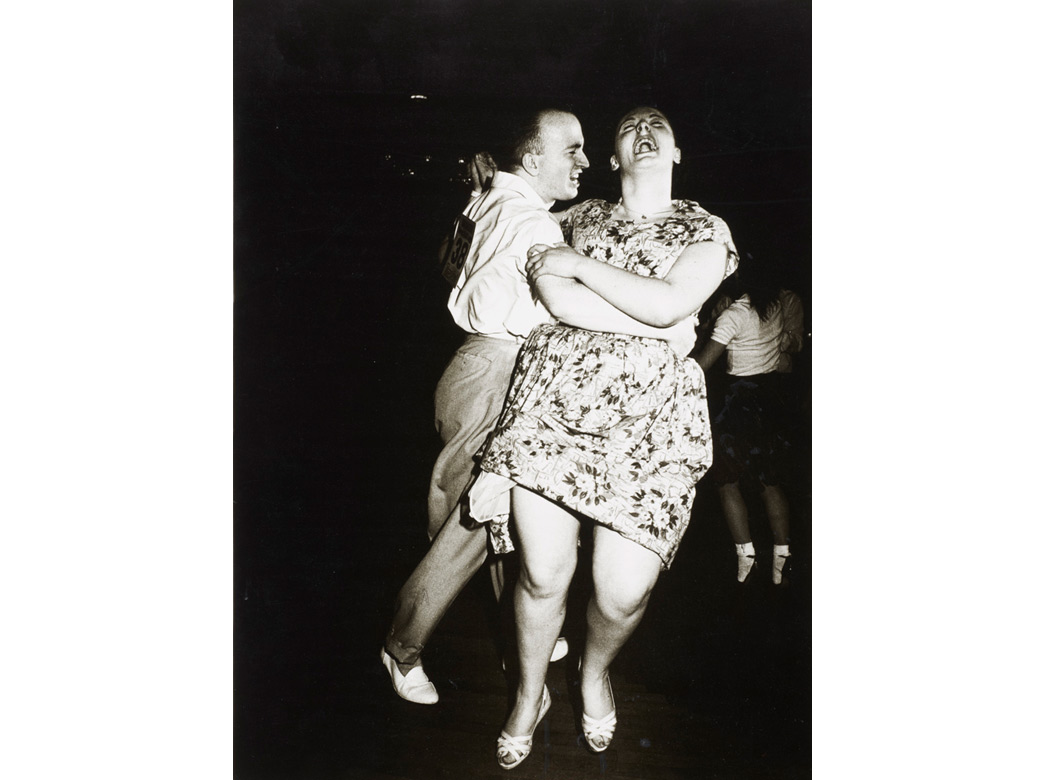
I hope Stomping Grounds celebrates and teases out the many social scenes of London during the late seventies and early eighties. . I hope it also brings deserved attention to Scott-Stewart’s achievements in making these photographs for future generations to ponder and delight in.
Stomping Grounds: Photographs by Dick Scott-Stewart is a free exhibition, on display in our Inspiring London space from 27 May - 18 September 2016.
You can buy prints of Dick Scott-Stewart's photographs from the Museum of London online print shop.
--br via tradutor do google
Punks se reúnem na Kings Road, em Londres, nos anos 70. Fot...
Dando prosseguimento ao evento Punk.London, que marca os 40 anos do movimento punk durante todo o ano de 2016, em Londres, duas exposições abrem agora: From King’s Road to King’s Cross: The Story of Punk Clothing ("Da King's Road à King's Cross: A História da Roupa Punk"), de 31/05 a 11/06, e Punk at the Museum of London, de 01/06 a 31/07, mostra de artefatos (principalmente indumentária) punks no Museu de Londres.
A primeira é uma parceria entre a icônica rua londrina King’s Cross e a famosa universidade de moda Central Saint Martins. A ideia é mostrar o quanto a moda punk, que teve como berço a King’s Road – onde nasceu a primeira loja de Vivienne Westwood e Malcolm McLaren, a SEX, ponto de encontro da punkadaria nos anos 70 –, influenciou toda Londres chegando até à elegante região de King’s Cross.
Peça de museu
A mostra punk no Museu de Londres reúne um bando de coisas, como roupas, acessórios, objetos, discos, fanzines e fotos e, claro uma boa parafernália relacionada às bandas punks. O barato dessa exposição – além de ser uma ótima oportunidade de visitar o pouco turístico Museu de Londres – é que os curadores mesclam peças que foram coletadas entre doações de memorabilia punk trazidas pelo público desde o início do ano. Ou seja: tem punk de boutique e do dia-a-dia dos cidadãos comuns de Londres, cidade que ainda hoje tem visível influência do punk.
A reportagem da BR Press conversou com as curadoras da mostra punk do Museum of London, Jen Kavanagh e Beatrice Behlen, que contaram, em entrevista exclusiva disponível para a mídia brasileira, como receberam e selecionaram peças do arco da velha e que não são exatamente de museu. Imperdível.
Museum of London - 150 London Wall, London EC2Y 5HN
-
Cenas de Londres: a fotografia de Dick Scott-Stewart
Este artigo contém imagens de nudez.
A nossa nova exposição Stomping Grounds: Fotografias de Dick Scott-Stewart exibe fotografias recentemente doados ao museu pela Dick Scott-Stewart Archive. curador da exposição Anna Sparham compartilha seus pensamentos sobre a extraordinária variedade de subculturas e cenas em exposição.
Trio no clube Blitz de 1981
© Dick Scott Stewart Archive / Museum of London; ID não. IN9715.1
Eu nasci em 1979. Eu tenho boas lembranças de dança na primeira infância a um amontoado de faixas dos anos setenta e oitenta, graças aos gostos ecléticos dos meus pais em música, suas mixtapes maravilhosas gravado a partir de Top 40 paradas do rádio e, claro, Top of the Pops.
Então, quando eu encontrei pela primeira vez algumas das fotografias Dick Scott-Stewart feitas do período, eu, naturalmente, trouxe essas lembranças para eles. Todos nós conectar com imagens através de nossas próprias experiências. Com estas fotografias particulares, minhas próprias experiências são, naturalmente, limitada, dado que eu ainda estava na pré-escola. Eu não posso fingir saber o que era para sair na Estrada do Rei em uma t-shirt preso-segurança e moicano, ou para jogar formas na pista de dança do clube Blitz (a obsessão leve, com idade de 4, com Boy George e do Culture Club Karma Chameleon não conta).
Mas eu posso começar a relacionar-se com estas fotografias quando eu lembro da minha própria adolescência. Eu sei o que ela sentia ao escapar na música; a emoção de descobrir o novo e velho. Eu sei como ele se sentia a experimentar um estilo de vestido que moveu contra moda mainstream. (Erros foram cometidos.) Eu sei como ele está se esforçando para ser parte de uma cena e como significativo que sentimento de pertença está em seus anos de formação. Isto é o que fascinou Dick Scott-Stewart quando ele virou a câmera na subcultura jovem.
Em um nível superficial, a escolha de roupas, maquiagem, tatuagens e penteados para fazer intrigantes assuntos a fotografia. Mas, além disso, são as atitudes e comportamentos sociais em exposição o que realmente cativou primeiro Scott-Stewart, e por sua vez a mim mesmo e todos aqueles que vêem seu trabalho.
Vamos começar com as fotografias Rockabilly ...
Suas camisas verificados, botas, calça jeans e cabelos todos em conformidade com o olhar Rockabilly avivamento naquele momento. Scott-Stewart já havia se reunido várias rockabillies em outro pub no circo de St. George e tinha começado a conhecer como eles socializados e onde pendurou para fora.
"Atitude" é sinónimo de subcultura jovem, expressa através da aparência, linguagem corporal e comportamento. Aqui, a figura central é dramaticamente jogando até a câmera. Ele parece ter caído ou, possivelmente, derrubou o seu pint no chão, deixando uma mancha ambíguo sobre as pedras da calçada abaixo. Prestados a preto e branco, este quase podia ser sangue, aumentando a energia da cena, a corrente de violência. o Rockabilly rindo à direita suaviza o tom de novo, para apresentar uma cena que transmite de forma brilhante imaturidade adolescente. em neste caso, a suposta ameaça de violência é tudo role-play, bombeada para a câmera. isso não leva longe do realismo do tiro. se os rapazes foram realmente lutando contra esse teria sido um registro documental interessante. capturá-los de forma eficaz jogo-luta é tão válido no refletindo o comportamento do grupo.
Scott-Stewart se interagir com as pessoas. Em uma entrevista para SLR Magazine, abril de 1983, falando com o editor Camera criativo Peter Turner, Scott-Stewart disse
Eu sou um voyeur 6 pés 2. Eu adoro ver as coisas. A fotografia é apenas uma desculpa para conhecer pessoas interessantes. É um passaporte para situações que eu gosto de estar envolvido.
Para o intervalo de tempo das fotografias desta exposição, ele teria sido na casa dos trinta. Infelizmente, Scott-Stewart morreu em 2002, com idades única 54. Aqueles que o conheciam são rápidos para comentar sobre sua natureza bem-humorado e discreto. Esta modéstia é uma razão pela qual o seu trabalho não é mais conhecido.
Suas fotografias mostram que seus súditos são frequentemente consciente de sua presença. Um envolvimento com as pessoas muitas vezes realmente vem através, assim como sua empatia para os sujeitos. Scott-Stewart relacionado mais fortemente àqueles que viu como enfrentar certas lutas na vida; que vivia na periferia. Suas imagens de subcultura jovem reflectir a forma como os indivíduos reunir, sobreviver em seus grupos e se esforçam para se mover contra a maré do mainstream. Outras fotografias desta exposição estão unidos por este segmento da marginalidade.
Este cross-dresser não é apresentada de uma forma sensacionalista ou sobre-dramático. A pose relaxed e do contexto bastidores implica facilidade com o fotógrafo, o que reflecte a natureza gentil e sociável de Scott-Stewart.
Às vezes, suas fotografias são mais sub-repticiamente um tiro. Suas imagens de strippers documentar tanto o ambiente em que eles estão realizando e a vulnerabilidade da situação. Isto é acentuado através de Scott-Stewart jogo com voyeurismo e vários espectadores - o fotógrafo fotografando um homem, fotografando uma stripper, sem dúvida, rodeado por uma multidão atenta.
Como um fotógrafo documental freelance, ao lado de seu trabalho encomendado, Scott-Stewart teria independentemente procurar histórias de fotografia que tinham o potencial para se transformar em recursos para revistas ou jornais. Em 1974 ele publicou um livro 'Fairground Snaps' reunindo muito trabalho tinha produzido ao longo de um projeto de longo prazo. Essas imagens agora residem no Gabinete Nacional Fairground Archive.
Ele tinha a intenção de criar um livro de seu projeto na luta livre em Battersea Câmara Municipal. Como parte da doação para o museu adquirimos o fólio artesanal que Scott-Stewart montado destas fotografias. A exposição mostra tanto o próprio fólio, e uma série de imagens dentro garimpados através de uma grande tela projetada. Como muitas pessoas de sua geração tinha gostava de assistir a luta no sábado televisão tarde. A pantomima divertido que o esporte oferecido recorreu ao humor de Scott-Stewart e o olho do fotógrafo. Ele e seus amigos vão regularmente e aproveitar o show em Battersea.
Ele fotografou os próprios lutadores in situ, permitindo que os seus trajes teatrais e representa a dominar as imagens. Ele então se virou a câmera para os 'fãs e groupies "e o público atento e interativo. Eu amo estas fotografias para a sua excentricidade, calor e seu poder para transportá-lo para o drama do evento. Há um sentido definido de escapismo aqui e, mais uma vez, o reconhecimento da força de pertencimento coletivo.
A coleção doada pelo Dick Scott-Stewart Arquivo para o museu - 117 fotografias mais o fólio de luta livre - vai além dos temas apresentados na exposição. Na seleção para o show, eu queria mostrar alguns dos trabalhos mais forte de Scott-Stewart, juntamente com o que melhor representou o seu entusiasmo, a abordagem e interesses. Outro tema comum da coleção geral é a noção de performance. A partir da nova Romantics às rockabillies, das strippers para os dançarinos jive, todos estavam realizando quer para a câmara ou para aqueles que os rodeiam. "Desempenho" parece ir de mãos dadas com as outras razões estes assuntos intrigados Scott-Stewart. Os grupos de fotografias apresentadas na exposição complementam um ao outro por ser dado um contexto mais amplo.
Espero Stomping Grounds celebra e provoca as muitas cenas sociais de Londres durante os finais dos anos setenta e início dos anos oitenta. . Eu espero que ele também chama a atenção merecida para realizações de Scott-Stewart em fazer estas fotografias para as gerações futuras para refletir e prazer em.
Pisoteando Motivos: Fotografias de Dick Scott-Stewart é uma exposição livre, em exposição no nosso espaço de inspiração Londres, de 27 maio - 18 setembro de 2016.
Você pode comprar impressões de fotografias de Dick Scott-Stewart do Museu de Londres loja de impressão online.




Nenhum comentário:
Postar um comentário